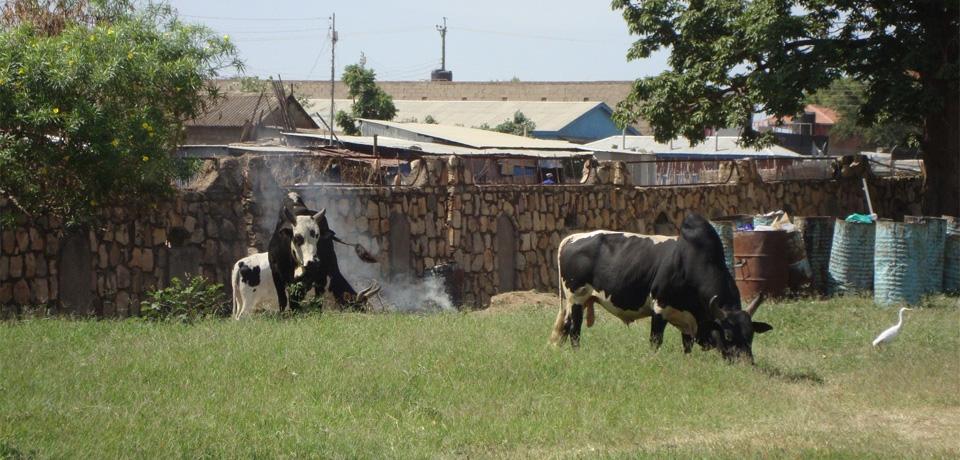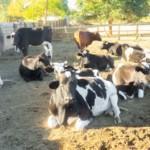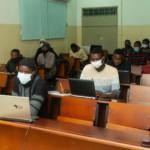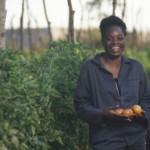
Kavwanga Yambayamba, Joyce Mufungwe, Satu Määttänen & Eija Laitinen
The educational sector should be responsive and evolve in correspondence to the needs of the society and the world of work. To cope with complex sustainability issues and rapidly changing labor markets, the graduates and experts of the 21st century are expected to possess a wide range of competencies beyond content knowledge. Modern educational approaches, such as problem-based learning, have been developed to provide students with generic and practical skills, valued by employers (Abbey et al., 2017).
Problem-based learning (PBL) is a student-centered teaching approach, where students learn by solving real-life problems. PBL aims to develop competencies such as information application, critical thinking, communication and teamwork skills, and lifelong learning abilities (Mierson, 1998). Despite the recognized benefits of the practice, PBL has not been utilized in higher education in Zambia. Instead, education relies on teacher-centered approach, the teacher being the driver of the learning process and students being passive recipients of the information. This approach reduces students’ independence and initiative and may inhibit the development of higher thinking skills, and the ability to apply knowledge and deal with complex problems (Ding et al., 2014; Weimer, 2002).
In this article, we show how problem-based learning can be applied for the first time in agricultural education in Zambia by using a practical course example. First, we present—from the teachers’ point of view—the implementation process of a dairy production course applying the PBL approach. We have chosen this course and topic, as low milk productivity and subsequently low milk consumption is a real problem in Zambia (World Bank, 2011). We will present concrete steps to implement a PBL course, to make implementation easy for teachers using the approach for the first time. Secondly, we will briefly discuss the potential challenges on transitioning from conventional to problem-based learning. This is the first time PBL course has been developed for and will be implemented in animal science programs at Mulungushi University and the University of Zambia. We acknowledge that with time and experience, teachers’ capabilities to implement PBL will develop. The practical course example presented in this article can be utilized as a base for other study programs and African universities to introduce PBL approach and develop PBL courses.
Implementation process of dairy production course
The dairy production course will be held for 3rd year Animal Science Bachelor students. We have chosen advanced students, as they have prior understanding about the main themes of the course. To stimulate students and upcoming work, we will provide students with background literature explaining the prevailing situation in the Zambian dairy sector, its challenges and the societal importance and impacts of the sector. For the PBL approach, we will use the following steps suggested by Ommundsen (2001):
- Form small groups
- Groups of 5–8 students will be formed to ensure effective interaction within groups (Bledsoe, 2011). We will assign the groups by lottery to ensure random distribution. We will ask each group to agree on roles and responsibilities. Working within groups will enhance students’ teamwork and communication skills as they need to learn how to collaborate and communicate with each other.
- Present the problem
- The problem to be dealt with in the course is the low dairy productivity in Zambia. Indigenous cattle breeds used in small-scale dairy farming produce on average 5.3 liters of milk per day, and cross-bred cattle produce approximately twice the amount (Hofer, 2015). We will ask students how milk productivity within both cattle types could be improved. For motivating students, we will emphasize that they are dealing with an authentic problem.
- Activate the groups
- We will ask groups to brainstorm and review the literature on the factors that affect milk productivity. Groups are expected to provide hypotheses for the low milk productivity of the Zambian smallholder sector. We will assist students, but not give ready solutions. The idea is for students to develop their information sourcing and analyzing skills by reviewing the literature, while simultaneously increasing their knowledge and application skills associated with milk production.
- Provide feedback
- We will request each group to present their hypotheses. The hypotheses will be discussed with the entire class. We will provide students with additional information and guidance if needed. We want students to construct knowledge themselves and learn from each other, rather than memorizing facts presented. This task will aid students to critically analyse the factors associated with low milk productivity in the Zambian smallholder sector.
- Ask for a solution
- We will ask students to provide practical solutions on how to improve the milk yield of indigenous and cross-bred cattle. For developing solutions, students need to apply the knowledge they have gained. Each group will be asked to create a report based on the problem and solutions. At the end of the course, students will be evaluated using a rubric scoring tool. Arguments, evidence, and clarity will be assessed.
Challenges of PBL implementation and the way forward
In the dairy production course, we expect students to acquire knowledge and skills important for their future employability and self-employment while simultaneously contributing to the development of the Zambian dairy sector. We anticipate that this new teaching and learning approach will be exciting for both students and teachers. However, based on our professional experience, we assume that adopting and implementing PBL will pose challenges. We have identified five main challenges that may be encountered:
- We, the teachers, may not know how to structure a problem. It may be difficult to estimate the time, or class periods needed to develop solutions. Thus, the scheduling of a PBL course may be challenging.
- PBL may be difficult to administer if we, the teachers, are not committed to the time and labour-intensive process of PBL.
- Students may have difficulties in transitioning from conventional learning to PBL.
- Some group members may not commit to problem-solving.
- Time constraints may cause students not to get the full benefit of PBL.
As we shall be implementing PBL for the first time in an environment with limited facilities and limited staff, we suggest starting with a modified problem-based approach. This entails using a conventional teacher-centered approach first and then shifting to PBL. Students will first be exposed to knowledge through lectures and/or laboratory exercises, to ease the adaptation to PBL. This approach has been used successfully by Liceaga et al. (2011). The authors concluded that a modified version of PBL can strengthen and broaden the knowledge gained in lectures and have a positive effect on students’ learning process.
To enhance the adoption of PBL, we think it is crucial to incorporate PBL approach into university curricula. Increasing and strengthening collaboration with the industry would enable the utilization of real-life industry challenges in PBL courses. Finally, partnering with developed country teachers, experienced with PBL, would be a great opportunity for African teachers to gain guidance and support for implementing PBL in their teaching. Over time, we anticipate PBL to permeate into study programmes and be a preferred mode of teaching and learning in Zambian universities. Adopting a PBL approach in Zambia is beneficial, as the country needs critical thinkers and problem-solvers with an entrepreneurial mindset.
Conclusion
PBL-approach is new in Zambia and has not yet been practised at Mulungushi university or the University of Zambia. However, as shown by the practical course example presented in this article, applying PBL in Zambian higher education is realisable. Due to the novelty of this approach in the educational sector in Zambia, we do not expect a smooth transition on the part of teachers or students. Patience and persistence will be important for PBL adoption and application. In the dairy production course, we anticipate students being motivated to understand the dairy industry and dig into the challenges that the sector faces. We are convinced that the creative minds of students will contribute to finding lasting solutions to the dairy sector.
This article has been written as part of a professional Problem-Based Learning Training Programme for East and Southern African university teachers. The training programme was organized as part of AgriSCALE project (https://www.agriscale.net/) activities during 2021. AgriSCALE is an EU-funded project coordinated by Häme University of Applied Sciences (FIN), that aims to reform agricultural education and curricula in East and Southern African universities. Project partners include nine universities from East and Southern Africa and Europe.
Authors:
Kavwanga Yambayamba, PhD in Animal Growth and Developmental Physiology from University of Alberta, Canada. He is the Dean of the School of Agriculture and Natural Resources at Mulungushi University.
Joyce Mufungwe, PhD in Ruminant Nutrition from Harper Adams University, United Kingdom. She is a lecturer in the School of Agricultural Sciences, Department of Animal Science at the University of Zambia.
Satu Määttänen, M.Sc. in Agricultural Sciences and M.Sc. in Environmental Science and Policy from University of Helsinki. She works as a research assistant at Häme University of Applied Sciences Bio Research Unit.
Eija Laitinen, PhD in Adult Education, Principal Research Scientist HAMKBio Research Unit. She is AgriSCALE Project Coordinator and leads the HAMK Africa Team.
References
Abbey, Lord, Dowsett, E. & Sullivan, J. (2017). Use of problem-based learning in the teaching and learning of horticultural production. Journal of Agricultural Education and Extension, 23(1), 61–78. https://doi.org/10.1080/1389224X.2016.1202846
Bledsoe, K. E. (2011). Managing Problem-Based Learning in Large Lecture Sections. Bioscience Education, 18(1), 1–11. https://doi.org/10.3108/BEEJ.18.1
Ding, X., Zhao, L., Chu, H., Tong, N., Ni, C., Hu, Z., Zhang, Z. & Wang, M. (2014). Assessing the effectiveness of problem-based learning of preventive medicine education in China. Scientific Reports, 4(1), 5126. https://doi.org/10.1038/SREP05126
Hofer, A. (2015). Small scale dairy farming in Zambia [Swedish University of Agricultural Sciences]. https://stud.epsilon.slu.se/8066/7/hofer_a_150617.pdf
Liceaga, A. M., Ballard, T. S. & Skura, B. J. (2011). Incorporating a Modified Problem-Based Learning Exercise in a Traditional Lecture and Lab-Based Dairy Products Course. Journal of Food Science Education, 10(2), 19–22. https://doi.org/10.1111/J.1541-4329.2011.00117.X
Mierson, S. (1998). A problem-based learning course in physiology for undergraduate and graduate basic science students. The American Journal of Physiology, 275(6 Pt 2), S16–S27. https://doi.org/10.1152/advances.1998.275.6.s16
Ommundsen, P. (2001). Problem-based Learning in Biology with 20 Case Examples. http://capewest.ca/pbl.html
Weimer, M. (2002). Learner-centered teaching: five key changes to practice (1st ed.). Jossey-Bass.
World Bank. (2011). Zambia – What Would it Take for Zambia’s Beef and Dairy Industries to Achieve Their Potential? World Bank. License: CC BY 3.0 IGO. https://openknowledge.worldbank.org/handle/10986/2771





